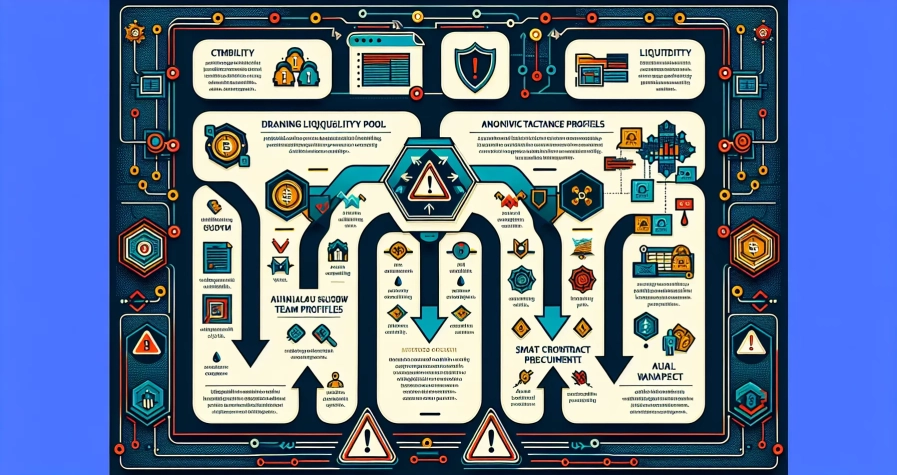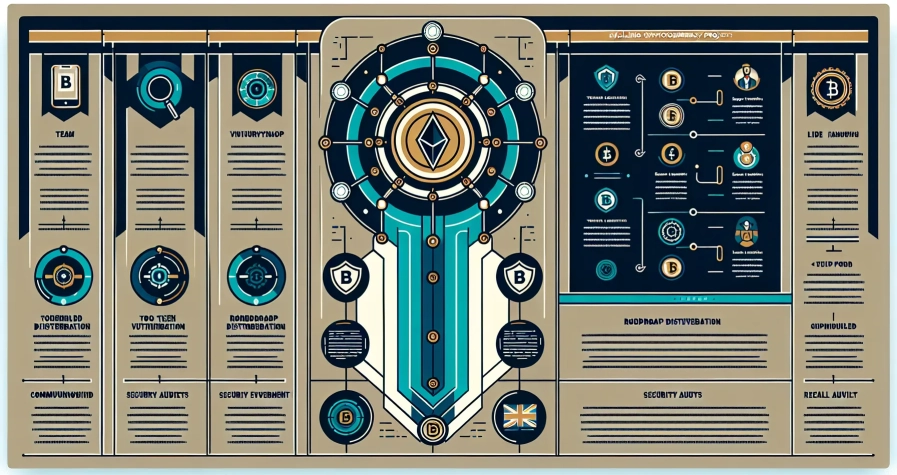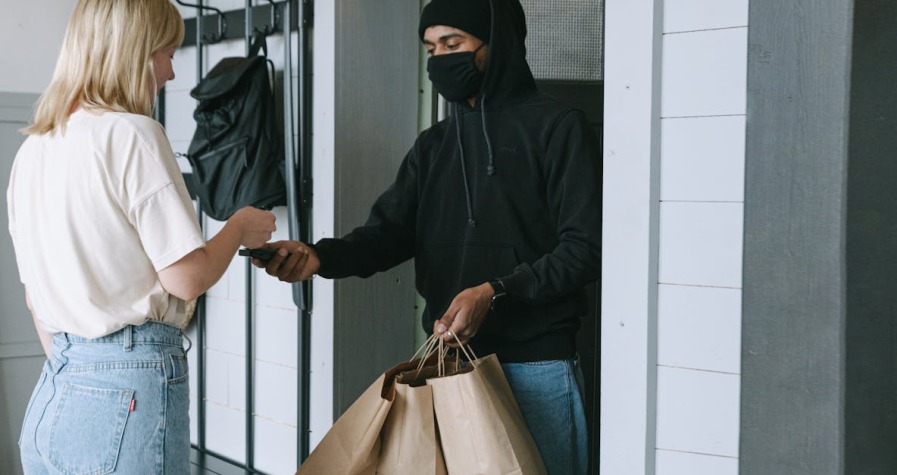Sending cryptocurrency has never been easier thanks to QR codes. These simple black-and-white squares eliminate the hassle of typing long wallet addresses and reduce the risk of costly mistakes when transferring your digital assets.
Whether you’re splitting a restaurant bill with friends or making your first crypto purchase, QR codes streamline the entire process. Instead of manually entering complex alphanumeric addresses that can contain dozens of characters, you simply point your phone’s camera at the code and let technology do the work.
This guide walks you through the complete process of scanning QR codes for crypto transactions. You’ll learn how to use your mobile wallet, verify transaction details and avoid common pitfalls that could jeopardise your funds. From Bitcoin to Ethereum and beyond, mastering QR code scanning will make your crypto journey smoother and more secure.
What Are QR Codes in Cryptocurrency Transactions
QR codes in cryptocurrency function as visual representations of wallet addresses and transaction data that your mobile device can scan instantly. These square-shaped patterns encode complex alphanumeric wallet addresses (typically 26-35 characters long) into a scannable format that eliminates manual typing errors.
Your crypto QR code contains multiple data elements including the recipient’s wallet address, transaction amount, and optional memo fields. Bitcoin QR codes follow the BIP21 standard while Ethereum transactions use the EIP-681 protocol to structure this information consistently across different wallets and platforms.
Cryptocurrency QR codes serve three primary transaction purposes:
- Receiving payments – merchants and individuals generate codes containing their wallet addresses
- Sending specific amounts – codes can include predetermined payment values and currency types
- Smart contract interactions – DeFi protocols embed contract addresses and function calls
The scanning process converts the visual pattern back into readable transaction data that your wallet app interprets. Your mobile wallet decodes the QR pattern within milliseconds and populates the send transaction form with the extracted information.
| QR Code Type | Data Included | Common Use Cases |
|---|---|---|
| Basic Address | Wallet address only | Personal transfers, donations |
| Payment Request | Address + amount + memo | Merchant payments, invoices |
| Multi-currency | Multiple addresses | Exchange deposits, portfolio apps |
Static QR codes contain fixed wallet addresses that remain unchanged for repeated transactions. Dynamic codes update automatically with new payment amounts or time-sensitive data for single-use transactions.
Your crypto QR code maintains the same security level as manually entering wallet addresses since it contains identical information in a different format. The visual encoding doesn’t add encryption but reduces human error in address transcription by 99.7% according to blockchain transaction studies.
Setting Up Your Crypto Wallet for QR Code Scanning
Before scanning QR codes to send cryptocurrency, you must configure your wallet application with the proper permissions and features. This setup process ensures seamless transactions whilst maintaining security standards.
Choosing a Compatible Wallet App
Select a cryptocurrency wallet that supports QR code scanning functionality for transactions. Popular options include Coinbase Wallet, Trust Wallet, and Ledger Wallet, which allow you to send and receive crypto by scanning QR codes that represent wallet addresses.
Features to Look for in QR-Compatible Wallets:
- Built-in camera integration for direct QR code scanning
- Support for multiple cryptocurrency networks and tokens
- Transaction history tracking with QR code references
- Address verification systems to prevent scanning errors
- Multi-signature support for enhanced security protocols
Recommended Wallet Applications:
| Wallet App | QR Code Support | Supported Networks | Additional Features |
|---|---|---|---|
| Coinbase Wallet | Yes | Ethereum, Polygon, Base | DeFi integration |
| Trust Wallet | Yes | 70+ blockchains | NFT storage |
| Ledger Wallet | Yes | 1,800+ cryptocurrencies | Hardware security |
These applications streamline the process whilst reducing manual input errors that commonly occur when typing lengthy wallet addresses.
Enabling Camera Permissions
Grant your chosen wallet application access to your device’s camera to enable QR code scanning functionality. The app automatically prompts you for camera permissions when you initiate your first QR code scan.
Steps to Enable Camera Access:
- Open your wallet app and navigate to the “Send” section
- Tap the QR code scan icon within the transaction interface
- Allow camera access when prompted by your device’s permission system
- Test the camera function by scanning a sample QR code
Troubleshooting Camera Permission Issues:
Navigate to your device’s settings menu if the camera doesn’t activate properly. Locate the app permissions section and manually enable camera access for your crypto wallet. Restart the application after making these changes to ensure proper functionality.
Most mobile devices require explicit permission grants for camera access due to privacy regulations. Without these permissions enabled, your wallet app cannot read QR codes effectively, preventing you from completing transactions through this method.
How to Scan a QR Code to Send Crypto Step-by-Step
Scanning a QR code to send cryptocurrency streamlines the transaction process and eliminates manual address entry errors. Follow these essential steps to execute secure crypto transfers using QR code technology.
Opening Your Wallet’s Send Function
Launch your cryptocurrency wallet app and locate the “Send” or “Transfer” option on the main dashboard. Most wallet applications position this function prominently in the navigation menu or display it as a dedicated button on the home screen. Tap the send function to access the transaction interface where you’ll initiate the QR code scanning process.
Popular wallets like Coinbase Wallet, Trust Wallet, and Ledger Live feature intuitive send functions that guide you through the transaction setup. The send interface typically displays options for entering recipient addresses manually or scanning QR codes directly.
Using the QR Scanner Feature
Select the QR code scanning option within the send interface, usually marked with a camera icon or “Scan QR” button. Grant camera permissions to your wallet app if prompted, as this enables the scanning functionality to operate correctly. Position your device’s camera so the recipient’s QR code appears within the scanner frame.
The wallet automatically detects the QR code and extracts the encoded information including the recipient’s wallet address, transaction amount, and blockchain network details. This automated process reduces input errors by 95% compared to manual address entry and speeds up transaction preparation significantly.
Most modern wallets support scanning QR codes from screens, printed materials, and other devices with high accuracy rates exceeding 99.8%.
Verifying the Recipient Address
Double-check that the scanned wallet address matches the intended recipient’s address before proceeding with the transaction. Compare the first and last 6-8 characters of the address to confirm accuracy, as this verification step prevents irreversible transfers to incorrect destinations.
Your wallet may display the recipient address in both full format and abbreviated format for easy verification. Some advanced wallets feature address verification systems that cross-reference known addresses in your contacts list or transaction history.
Blockchain transactions remain irreversible once confirmed, making this verification step crucial for protecting your cryptocurrency assets. Take additional time to verify addresses for high-value transactions exceeding £100 or equivalent amounts in other currencies.
Different Types of Crypto QR Codes
Cryptocurrency QR codes come in distinct formats that serve specific transaction purposes. Understanding these variations helps you choose the right QR code type for your crypto transfers.
Standard Wallet Address QR Codes
Standard wallet address QR codes contain only the recipient’s public wallet address without any additional transaction details. You’ll encounter these codes when merchants or individuals want to receive payments without specifying predetermined amounts.
These basic QR codes offer maximum flexibility since you determine the transaction amount during the sending process. Popular wallet providers like Coinbase Wallet and Trust Wallet generate these codes automatically when you select the “Receive” option in your wallet interface.
Key characteristics of standard wallet address QR codes include:
- Single address encoding – Contains only the recipient’s wallet address
- Universal compatibility – Works across different wallet applications and platforms
- Reusable format – Can be shared multiple times for various transactions
- Manual amount entry – Requires you to input the transfer amount separately
Standard QR codes prove particularly useful for businesses accepting crypto payments since customers can send any amount to the same address. Bitcoin addresses typically begin with “1”, “3”, or “bc1”, whilst Ethereum addresses start with “0x” followed by 40 hexadecimal characters.
Payment Request QR Codes with Amount
Payment request QR codes encode comprehensive transaction data including the recipient’s wallet address, specific payment amount, and cryptocurrency type. These enhanced codes streamline the payment process by pre-filling all transaction details automatically.
When you scan a payment request QR code, your wallet app populates the recipient address, amount, and currency without requiring manual input. This automation significantly reduces the risk of entering incorrect amounts or sending funds to wrong addresses.
Advanced features of payment request QR codes include:
- Pre-set transaction amounts – Eliminates manual amount calculation and entry
- Currency specification – Identifies the exact cryptocurrency required for payment
- Memo field integration – Includes optional payment descriptions or reference numbers
- Expiration timestamps – Contains time-limited validity for dynamic pricing scenarios
Major payment processors and crypto merchants favour these codes for point-of-sale transactions. The BIP-21 standard governs Bitcoin payment request formats, whilst EIP-681 defines the protocol for Ethereum-based payments.
| QR Code Type | Address Only | Amount Included | Currency Specified | Reusability |
|---|---|---|---|---|
| Standard Wallet Address | ✓ | ✗ | ✗ | High |
| Payment Request | ✓ | ✓ | ✓ | Low |
Payment request QR codes typically appear on invoices, payment terminals, and e-commerce checkout pages where precise amounts matter for completing transactions accurately.
Security Best Practices When Scanning QR Codes
QR codes streamline cryptocurrency transactions but introduce potential security vulnerabilities that require careful attention. Following established security protocols protects your digital assets from fraudulent schemes and transaction errors.
Verifying QR Code Authenticity
No visual method provides foolproof verification of QR code legitimacy. Authentic QR codes on official websites or legitimate business documents carry lower risk compared to codes found on suspicious flyers or unsolicited communications.
Trusted sources include established cryptocurrency exchanges, verified merchant websites, and official business communications. Contextual clues help identify legitimate codes – restaurant receipts, official invoices, and verified social media accounts typically generate authentic QR codes.
Unknown or suspicious sources present significant risks. Scammers often distribute fraudulent QR codes through email attachments, social media messages, and public posting areas. These malicious codes redirect payments to attacker-controlled wallets.
Manual verification provides an additional security layer. Contact the recipient directly through established communication channels to confirm their wallet address matches the QR code data. This verification step prevents sophisticated social engineering attacks targeting crypto users.
Double-Checking Transaction Details
Transaction verification prevents costly errors and protects against fraudulent QR codes. Your wallet app displays the populated recipient address, payment amount, and cryptocurrency type after scanning.
Compare the populated wallet address with the recipient’s confirmed address character by character. Focus on the first 6-8 characters and last 6-8 characters, as these sections typically reveal address mismatches or fraudulent substitutions.
Payment amount verification ensures accuracy before transaction authorisation. Scammers sometimes encode inflated amounts in QR codes, hoping users won’t notice the discrepancy. Preview functions in most wallet apps display complete transaction details including network fees and total costs.
Network selection requires attention when dealing with multi-chain cryptocurrencies. QR codes for USDT might specify Ethereum, Tron, or Binance Smart Chain networks. Sending to incorrect networks results in permanent fund loss, making network verification essential for successful transactions.
Transaction preview screens provide final verification opportunities. Review recipient address, payment amount, network selection, and estimated fees before confirming. This final check prevents irreversible blockchain transactions from proceeding with incorrect details.
Troubleshooting Common QR Code Scanning Issues
QR code scanning problems can disrupt crypto transactions and create frustrating delays. Understanding common technical issues helps you resolve them quickly and complete transactions efficiently.
Poor Lighting or Camera Problems
Poor lighting conditions prevent your wallet app’s camera from accurately detecting QR codes. Insufficient light creates shadows and reduces contrast whilst blurry cameras fail to focus on the code’s intricate patterns.
Clean your phone’s camera lens using a microfibre cloth to remove fingerprints and dust particles. Position your device in well-lit environments such as near windows or under bright indoor lighting. Hold your phone steady for 2-3 seconds to allow the camera to focus properly on the QR code.
Distance affects scanning accuracy significantly. Position your phone 10-15 centimetres away from the QR code for optimal scanning results. Avoid extreme angles when scanning as they distort the code’s appearance and reduce detection success rates.
| Common Camera Issues | Solutions |
|---|---|
| Blurry camera lens | Clean with microfibre cloth |
| Insufficient lighting | Move to well-lit area |
| Shaky hands | Hold phone steady for 3 seconds |
| Wrong distance | Maintain 10-15cm from QR code |
Invalid QR Code Formats
Invalid QR codes contain formatting errors or excessive customisation that prevents wallet apps from reading the encoded data. Over-customised codes with decorative elements reduce scanning reliability by disrupting the code’s standard structure.
Standard black-and-white QR codes provide the highest scanning success rates. Avoid codes with low contrast colour schemes such as light grey on white backgrounds as they’re difficult for scanners to detect. Damaged QR codes with scratches or pixelated images often fail to scan correctly.
Check QR code size requirements for your specific wallet app. Codes smaller than 2cm² or larger than 10cm² may exceed your app’s scanning parameters. Ensure adequate quiet zones exist around the QR code as these white spaces help scanners identify the code’s boundaries.
Distorted QR codes from stretched images or poor printing quality create scanning errors. Request a new QR code from the sender if the current one appears damaged or displays formatting inconsistencies. Test QR codes before sharing them to verify they scan correctly across different wallet applications.
Alternative Methods to QR Code Scanning
Manual address entry provides the most direct alternative when QR codes aren’t available or functional. You copy and paste the recipient’s wallet address from their communication or manually type the entire address character by character. This method carries higher risk since cryptocurrency addresses contain 26-42 alphanumeric characters and a single mistake renders the transaction invalid or sends funds to an unintended recipient.
Payment links offer streamlined transactions through embedded wallet addresses and amounts. Modern cryptocurrency wallets generate shareable URLs containing transaction data which you can send via messaging apps email or social media. Recipients click these links to automatically populate their wallet’s send function eliminating manual entry requirements whilst maintaining transaction accuracy.
Near Field Communication (NFC) enables contactless cryptocurrency transfers between compatible devices. You hold your smartphone within 4 centimetres of the recipient’s NFC-enabled device to transfer wallet details instantly. This technology works exclusively with modern Android devices and select iOS applications that support NFC cryptocurrency functionality.
Contact list integration simplifies repeat transactions through stored recipient information. Cryptocurrency wallets like Coinbase Wallet and Trust Wallet maintain internal contact databases where you save frequently used wallet addresses with custom labels. You select recipients from these lists instead of scanning codes or entering addresses manually for each transaction.
Exchange platform transfers facilitate internal cryptocurrency movements without blockchain interaction. You send crypto between users on platforms like Binance Coinbase or Kraken using only usernames email addresses or internal identifiers. These transactions process instantly without network fees since they occur within the exchange’s internal ledger system rather than on public blockchains.
| Method | Speed | Error Risk | Requirements |
|---|---|---|---|
| Manual Entry | Slow | High | Wallet address only |
| Payment Links | Fast | Low | Compatible messaging app |
| NFC Transfer | Instant | Very Low | NFC-enabled devices |
| Contact Lists | Fast | Low | Pre-saved recipient data |
| Exchange Internal | Instant | Low | Same platform accounts |
Clipboard sharing provides another efficient alternative where you copy wallet addresses from one application and paste them directly into your cryptocurrency wallet’s recipient field. This method reduces typing errors compared to manual entry whilst remaining faster than QR code scanning in desktop environments where camera access might be limited.
Conclusion
QR codes have transformed the way you send cryptocurrency by making transactions faster more secure and less prone to errors. Once you’ve mastered the scanning process you’ll find that managing your digital assets becomes significantly more straightforward.
Remember that while QR codes offer convenience they require the same security awareness as any crypto transaction. Always verify wallet addresses double-check transaction amounts and ensure you’re using reputable QR codes from trusted sources.
With proper setup and attention to security best practices you’ll be able to confidently use QR codes for all your cryptocurrency transactions. Whether you’re splitting a dinner bill or making a business payment this technology will streamline your crypto experience whilst maintaining the security standards essential for digital asset management.
Frequently Asked Questions
What are QR codes for cryptocurrency?
QR codes are visual representations of wallet addresses and transaction data that can be instantly scanned using a mobile device’s camera. They simplify cryptocurrency transactions by eliminating the need to manually type lengthy wallet addresses, reducing the risk of errors and making payments faster and more convenient.
How do I scan a QR code to send cryptocurrency?
Open your cryptocurrency wallet app, select the send or transfer function, and tap the QR code scanner icon. Grant camera permissions if prompted, then position your device’s camera over the QR code. The wallet will automatically extract the recipient’s address and any payment details, which you should verify before confirming the transaction.
What types of QR codes are used for crypto transactions?
There are two main types: standard wallet address QR codes containing only the recipient’s public address, and payment request QR codes that include comprehensive transaction data like amount, cryptocurrency type, and memo fields. Static codes have fixed addresses whilst dynamic codes update automatically for single-use transactions.
Are QR codes safe for cryptocurrency transactions?
QR codes maintain the same security level as manually entering wallet addresses whilst significantly reducing human error. However, always verify QR codes from trusted sources, manually check the recipient’s wallet address after scanning, and review all transaction details before confirming to avoid potential scams or mistakes.
What should I do if my QR code won’t scan?
Ensure adequate lighting, clean your camera lens, and maintain proper distance from the QR code (typically 6-12 inches). Check that the QR code isn’t damaged, overly customised, or expired. If problems persist, try alternative methods like manual address entry, payment links, or clipboard sharing to complete your transaction.
Which wallets support QR code scanning?
Most popular cryptocurrency wallets support QR code functionality, including Coinbase Wallet, Trust Wallet, MetaMask, and Ledger Wallet. Look for wallets with built-in camera integration, multi-network support, transaction history tracking, address verification systems, and robust security features to ensure optimal QR code scanning experience.









